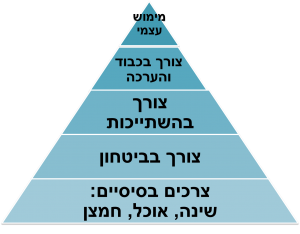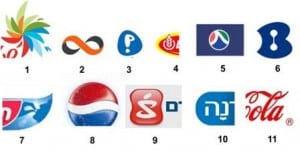It seems to some of us that purchasing a product or service is a simple process. Decide – buy, “I passed by, saw a sale – bought” or “I’m missing dairy products at home – travel, buy”. In fact, behind one simple act of acquisition there are so many factors involved within us that we didn’t even know existed. The ones who know best what happens in our brains during our behavior as consumers are the advertisers.
Advertisers go to great lengths to learn what is happening in our black box. Entire courses in academia are devoted to consumer behavior, marketing methods, advertising and more. Understanding the consumer mind is an asset for advertisers. In this way, they will be able to plan the way the product is delivered, its timing, advertising style, advertising method, advertising placement and more – all in order to get the consumer to buy – and a lot. Consumer behavior is a whole doctrine.
Why is it important for me to learn about my behavior as a consumer?
Proper financial conduct begins with knowing our financial capabilities and prioritizing the services and products in which we invest our money.
Many families find themselves surprised at the end of each month by the amount listed on their credit card statement, indicating that we are not sufficiently aware when shopping. Another deal, another temptation, another brand.
An advertiser is a professional and his job is to get us to purchase. We should not be a puppet on a string who “falls” into the trap of the advertising network and is persuaded for the wrong reasons to make a purchase.
Studying our behavior as consumers, including recognizing our weak points, will deepen our awareness when purchasing and ensure that the right purchase is made despite the fact that behind the advertising there was one main goal – that we purchase.
Here are in a nutshell some important principles in consumer behavior:
How involved am I in buying?
The goal of advertisers is that you, as a consumer, will be as involved as possible in buying. Have a personal touch or special importance that you attach to the purchase.
In any case, any stimulation and exposure to the product will bring me closer to buying, I will search for more information about the product and I will also do Word Of Mouth = word-of-mouth advertising of the product.
What factors influence my behavior as a consumer?
Each person is a whole world, and there are various factors that influence his behavior as a consumer:
Personal factors: age, occupation, economic status, lifestyle and personal preferences.
Example: A young mother after childbirth – a personal factor will influence her behavior as she passes by the diapers and porridge shelves.
Social factors: role models, leaders close to my views, my immediate family.
Example: A teenager who admires a particular TV star – his admiration will influence his patterns of consumerism.
Cultural factors: the Israeli culture around me, the ethnic culture in which I grew up.
Example: On Memorial Day, I won’t go out for entertainment.
Psychological factors: What motivates me to buy? How do I perceive reality? Attitudes and beliefs.
Example: A vegetarian who spares animals and therefore does not buy meat and fish.
In every purchase, the consumer has a motive!
Have you asked yourself what motivates you to make a particular purchase? It is always an unmet need, and it is the gap between what is desired and what is available that is decisive to buy and thus complete the need.
Does an unmet need amount to purchasing basic food or clothing?
Before us is Maslow’s “hierarchy of needs” – the first lesson of each advertiser. It is possible to see in the scale the variety of needs of a person – according to the division into levels, with the most basic needs that a person must have in order to exist appear at the base of the pyramid.
After completing this floor, a person has additional needs and wants to occupy one floor after another, until the highest human need is met – self-realization.
Advertising is much more than a product…
When an advertiser directs a product to a consumer, he must know what message the product will convey and what need his product will answer.
Watch the next advertisement: Subaru-shark advertisement
This is a car advertisement. So what does it have to do with the dramatic melody, the sharks flying in front of the dark shades that accompany the advertisement?
This is an example of an advertisement whose function is not only to fulfill a basic need of a car as a product that helps me get around and get from place to place (basic need). The advertiser wants to convey a message: this vehicle gives power, indicates the owner of a vehicle with significant power and status. Of course, such a car will cost tens of percent more than a regular family car, because it sends a message that meets a much higher need – status and prestige.
After the advertiser has decided which message he wants to convey to the consumer, he chooses how he wants the message to be perceived in the consumer’s mind.
How does he do it?
In advertising, far beyond the written words, the pace, color, timing and all the scenery around the advertisement are of great importance, carefully and carefully planned.
There are well-known “rules” used by advertisers
Closure Law:
We complete fragmentary sections at the top. Because of curiosity and the desire to close the circle, we remain alert and attentive in order to see the end of the advertisement. The advertisement will consist of several parts: in the first part we do not know what it is about, but in the second part or the following parts explain what it is. This arouses curiosity and when you see the second part, you make a closure, a completion of the advertisement. Examples: publishing humor, publishing stories, publishing teaser teasers.
For example, watch a candy cell phone advertisement
In this advertisement, Pelephone launches a 1+1 promotion. The message she conveys to her customers is that the operation is big, worthwhile, special, unusual. The company divides the advertisement into two parts: in the first part it presents a special and interesting reality, so we consumers are very curious to continue to see and understand which product it is. In the second part, she “closes” the advertisement by presenting the promotion she is launching.
Law of Proximity:
Watch the advertisement of Bank Hapoalim and Steimatzky
The advertisement can be seen as a well-known phenomenon of bringing the advertising company closer to a common ideal found in consensus.
In this case, Bank Hapoalim and the ideal of turnover appear together. The purpose of advertising is to tie in the mind of the consumer the bank not only with money, loans and commissions, but also with a universal ideal that contributes to the environment, society and its strengthening. We as consumers must be vigilant – does an advertisement indicate that the company is indeed superior to its competitors in commissions? Terms of payment? Service? How much interest rate is offered? Or all this is implied by the use of the “law of sacrifice.” We must always exercise discretion and divide between the proximity to the common ideal that appears in advertising and the dry characteristics of the company that is trying to sell us its products or services.
Law of simplicity:
Most of us want to understand advertising simply as it is. Such as a logo without text. These are examples of brands that even without mentioning the company name, we know which companies are involved. Wordless advertising strengthens and enhances the brand logo.
Law of continuity:
When the advertiser uses multiple advertisements for the same product, different variations of the same idea in the same time period. This method affects us and the message of advertising penetrates more strongly into our heads. Another option for continuity is the use of celebrities over time, as advertisers often do.
Example: Colgate created a sophisticated advertising campaign using a good advertising continuity method to promote the purchase of dental floss.
The campaign features people with dirt in their teeth, and achieved its goal because it proved that food left on the teeth attracts more attention than any physical defect (six fingers in the hand, a ghost arm floating, an ear missing). Such advertising creates curiosity in the consumer to find the humor in the next advertisement. The campaign instills in the consumer the idea that Colgate wanted to convey.
But have you checked as a consumer whether this is a necessary purchase? Is it really the more lucrative?
Remember! We must exercise discretion and responsibility. The advertiser’s goal is to buy. Let’s not let ads buy us!
Note: The article gave relevant examples of companies and advertisements. The article should not be seen as a recommendation or defamation of any brand or company, but only as an example to illustrate the matter.






